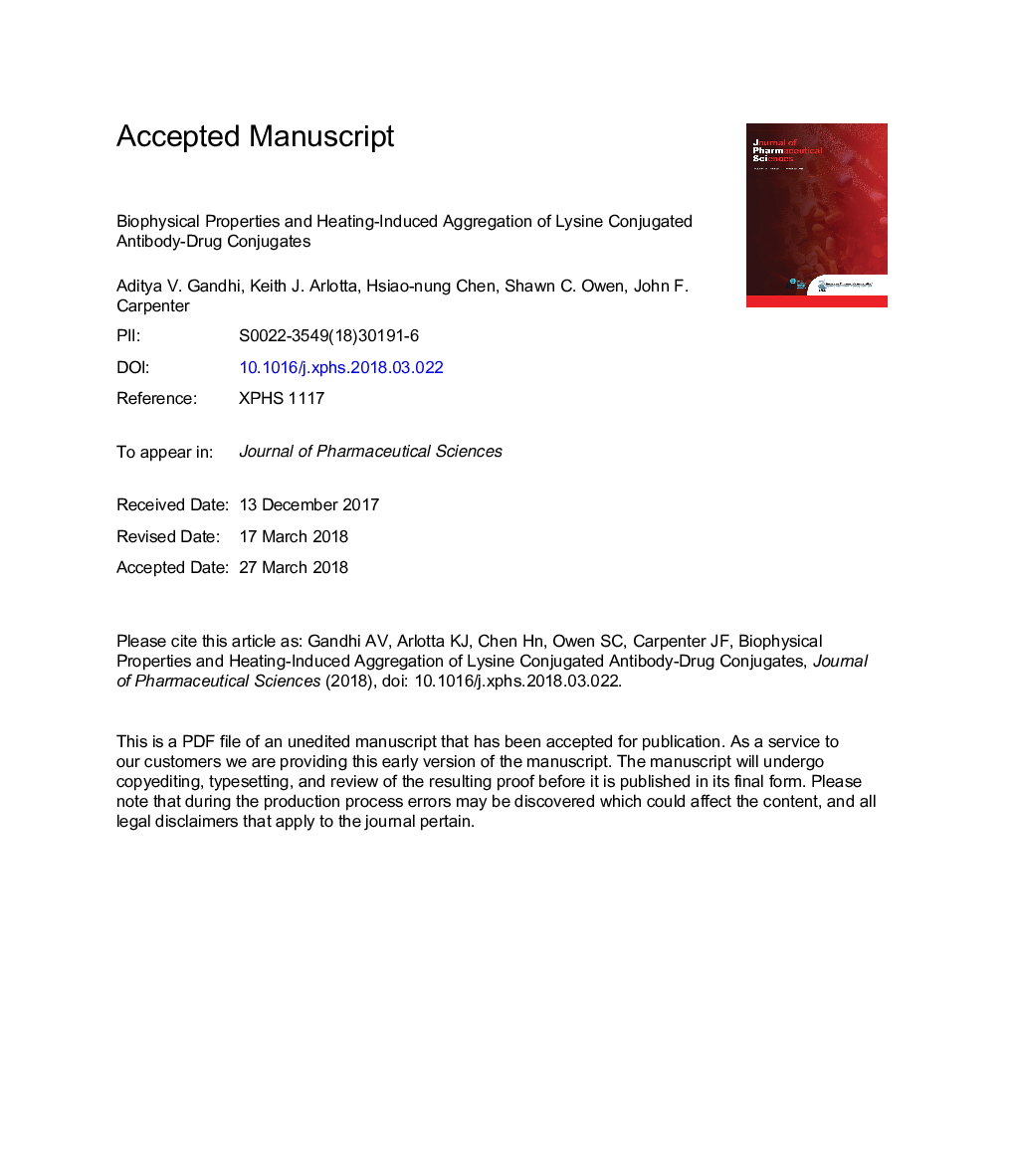| Article ID | Journal | Published Year | Pages | File Type |
|---|---|---|---|---|
| 8513200 | Journal of Pharmaceutical Sciences | 2018 | 54 Pages |
Abstract
The commercially available antibody-drug conjugate (ADC) product, Kadcyla® is synthesized using a 2-step reaction, wherein the linker is conjugated to native lysines on the mAb in step 1, followed by drug conjugation to the linker-modified antibody in step 2. In our study, we synthesized a lysine-conjugated ADC (Syn-ADC) on the same trastuzumab scaffold as Kadcyla® using a 1-step reaction. Mass spectrometry of both products revealed a subpopulation of Kadcyla® containing free linkers conjugated to the mAb, but not conjugated to the drug, which were absent in the 1-step reaction ADC product. Differential scanning calorimetry thermograms showed that the drug and linker conjugation significantly reduced the thermal stability and energies of activation for the denaturation of the CH2 domain of the ADCs. The heating induced aggregation events started as early as â¼57°C and â¼45°C for Kadcyla® and Syn-ADC, respectively, compared with 71°C for Herceptin®. The colloidal stability measurements clearly showed that the hydrophobic drug payload on ADCs significantly reduced the repulsive interprotein interactions when compared to the unconjugated antibody under formulation buffer conditions (pH 6.0). Attaching hydrophobic drug and linker moieties onto the antibody lowered the thermal and colloidal stabilities and increased the aggregation propensity of the ADCs.
Keywords
Related Topics
Health Sciences
Pharmacology, Toxicology and Pharmaceutical Science
Drug Discovery
Authors
Aditya V. Gandhi, Keith J. Arlotta, Hsiao-Nung Chen, Shawn C. Owen, John F. Carpenter,
